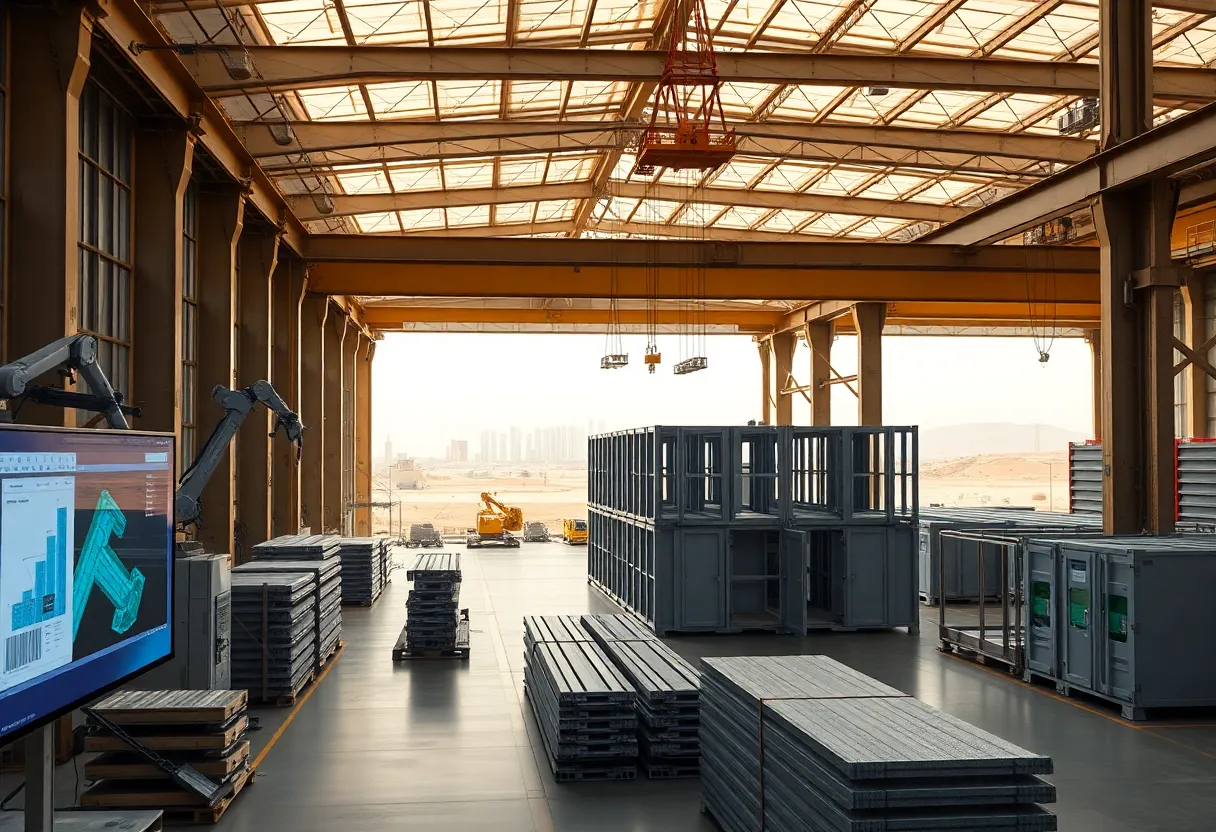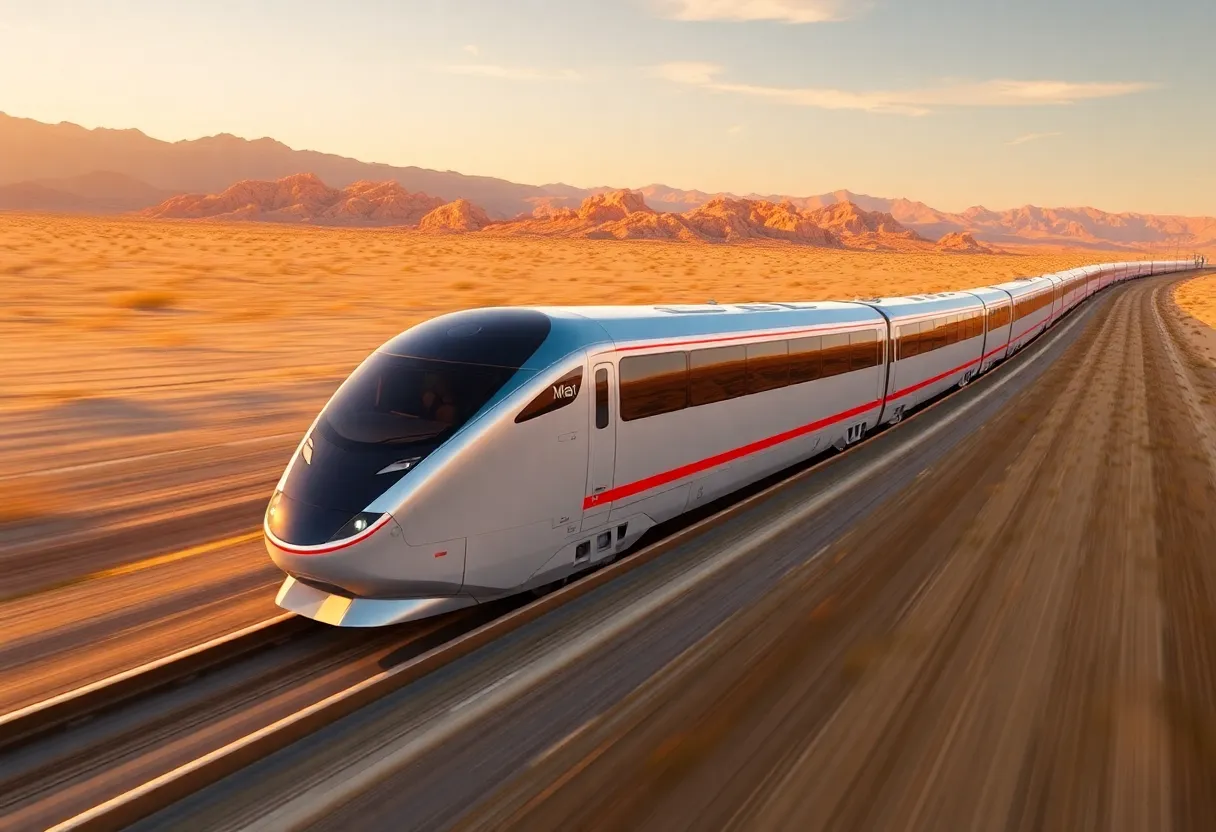Saudi Arabia, August 16, 2025
News Summary
The Saudi market for prefabricated buildings and structural steel is expanding as demand for faster, cost-efficient construction rises. Valued at $1.82 billion, forecasts project growth to $2.58 billion driven by housing needs, large government-led developments, logistics zones and investments in education and healthcare. Adoption of automated factory production, robotic assembly, 3D printing and BIM is improving quality and speed while reducing weather risk and on-site labor. Large modular plants and smart-city projects requiring rapid delivery are creating steady orders for modular components and steel frames, though volatile raw material prices and supply-chain limits remain constraints.
Saudi prefabricated building and structural steel market valued at $1.82B in 2024; forecast to reach $2.58B by 2033
A recent market study shows the Saudi prefabricated building and structural steel sector reached USD 1.82 billion in 2024 and is projected to grow to USD 2.58 billion by 2033, implying a compound annual growth rate of about 3.73% between 2025 and 2033. The research points to rising city housing needs, government-backed mega-projects and rapid tech adoption in construction as the main forces driving the expansion.
Why the market is growing now
Demand for fast, cost-efficient building methods is increasing as cities swell and large public and private projects push construction volumes higher. Government initiatives and major development programs are pushing timelines and quality standards that favor off-site manufacturing and steel-based systems. Several nationwide programs and urban megaprojects are cited as key demand drivers, creating a steady pipeline for prefabricated elements and fabricated steel frames.
Technology and production trends
Advances in automated manufacturing, 3D printing and digital design tools such as building information modeling are reshaping how prefabricated buildings are planned and produced. These technologies improve accuracy, reduce waste, and speed up delivery. Factory-based production with robotic welding, CNC machining and laser cutting is helping builders meet tight timelines while keeping quality consistent. Digital tools are also being used for better resource planning, fewer mistakes on site and faster schedules.
Mega-projects and large developments
Big, high-profile developments that require rapid delivery and strict performance standards are driving adoption of prefabrication and structural steel. Smart-city projects and other large mixed-use developments need fast, repeatable construction methods that can meet sustainability and design targets. Examples include a recent multi-hundred-million-dollar smart-city initiative in the Eastern Province covering more than a quarter million square meters with hotels, offices, retail and extensive parking; and a separate large accommodation contract supplying thousands of modular homes for work camps on a giga-project zone. These projects tend to favor steel frames and modular blocks that can be assembled quickly, dismantled and moved if needed.
Housing, education and healthcare are expanding
Rapid urbanization and population growth have pushed residential building to the forefront of demand. The residential sector currently dominates use of prefabricated components. At the same time, public-private partnership programs for schools and hospitals are relying on off-site construction to meet tight timelines: a recent education PPP phase delivered dozens of schools in one region using efficient delivery models. Prefabricated and steel solutions are attractive for time-critical public-sector projects that need predictable costs and fast handovers.
Logistics and industrial zones add more demand
National logistics planning and funding for new logistics zones are expected to create construction demand for warehouses, terminals and supporting facilities. Recent government funding announcements aim to expand the number of logistics zones substantially by 2030, a push that favors prefabricated steel structures because they can be scaled rapidly and assembled with lower on-site labor.
Cost, quality and sustainability advantages
Prefabrication reduces on-site labor needs, limits weather-related delays and offers tighter control over material use, leading to less waste and lower overall costs. Structural steel components are relatively lightweight, easier to transport and quicker to install, which reduces logistical costs. Factory production enables closer quality control and accurate dimensions for faster site installation. Some modular facilities opened recently use robotics and digital methods to boost output and support affordable housing programs.
Regional context: GCC fabrication market
At the regional level, the Gulf structural steel fabrication market was valued in the tens of billions in 2024 and is expected to grow further by 2030. The wider regional market benefits from major infrastructure and urban projects across neighboring countries, while facing constraints from fluctuating raw material prices and limited domestic steel production. That dependence on imports exposes fabricators to global supply swings, which can pressure margins and timelines.
Market structure and leading segments
Within the prefabricated building market, floors and roofs currently make up the largest share. For the structural steel side, H-type beams represent the bulk of market volume today. Reports analyzing the sector include detailed profiles of major companies active in prefabrication and steel fabrication and break down the market by component and end use.
Challenges ahead
Material-price volatility, supply-chain exposure and availability of skilled builders remain important risks. Smaller fabricators and modular makers are especially vulnerable when raw material costs spike. Despite automation and procurement strategies that firms are using to control costs, unpredictability in steel and other inputs will continue to shape project planning and contractor selection.
Bottom line
The sector is on a steady growth path driven by housing demand, public infrastructure programs and large private developments that value speed and repeatability. Technology and factory-based production are making prefabricated and steel-based construction more feasible for large, complex projects across the kingdom. The next five to ten years are likely to see continued investment in modular facilities, digital design tools and automated production to meet demand while keeping costs and schedules under control.
Frequently Asked Questions
How big is the Saudi prefabricated building and structural steel market today?
The market reached USD 1.82 billion in 2024 and is projected to grow to USD 2.58 billion by 2033.
What annual growth rate is expected?
The market is forecast to grow at roughly 3.73% compound annual growth between 2025 and 2033.
What are the main drivers of growth?
Key drivers include rising urban housing needs, large public and private development projects, government infrastructure programs, and technology adoption in construction such as automation, 3D printing and BIM.
What advantages do prefabricated and steel solutions offer?
They offer faster delivery, cost and material efficiencies, better quality control, less weather impact, and easy scalability for large projects.
What risks could slow growth?
Volatile raw material prices, reliance on imports for steel, and shortages of skilled on-site labor are principal risks that could affect timelines and margins.
Key features at a glance
| Feature | Details |
|---|---|
| 2024 market value | USD 1.82 billion |
| 2033 forecast | USD 2.58 billion |
| Forecast CAGR (2025–2033) | Approximately 3.73% |
| Main growth drivers | Housing demand, mega-projects, government infrastructure, technology adoption |
| Leading segments | Floors and roofs (prefab); H-type beams (structural steel) |
| Advantages | Speed, cost savings, quality control, reduced waste, less weather impact |
| Key risks | Raw material price volatility, import dependence, labor shortages |
Deeper Dive: News & Info About This Topic
Additional Resources
- GlobeNewswire: GCC Structural Steel Fabrication Industry Report (2025)
- Wikipedia: Structural steel
- TechCrunch: Mighty Buildings raises $52M to build 3D-printed prefab homes
- Google Search: 3D printed prefab homes Mighty Buildings
- Global Construction Review: Swedish firm to build 2,174 apartments for Saudi’s NEOM
- Google Scholar: NEOM prefabricated housing Saudi Arabia
- LuxuryLaunches: Sindalah transformation (NEOM)
- Encyclopedia Britannica: Sindalah NEOM
- ConstructionBriefing: 17 of Saudi Arabia’s biggest construction megaprojects
- Google News: Saudi construction megaprojects prefabrication
Author: Construction CA News
The CALIFORNIA STAFF WRITER represents the experienced team at constructioncanews.com, your go-to source for actionable local news and information in California and beyond. Specializing in "news you can use," we cover essential topics like product reviews for personal and business needs, local business directories, politics, real estate trends, neighborhood insights, and state news affecting the area—with deep expertise drawn from years of dedicated reporting and strong community input, including local press releases and business updates. We deliver top reporting on high-value events such as the Rose Parade, Coachella, Comic-Con, and the California State Fair. Our coverage extends to key organizations like the California Building Industry Association and Associated General Contractors of California, plus leading businesses in technology and entertainment that power the local economy such as Apple and Alphabet. As part of the broader network, including constructionnynews.com, constructiontxnews.com, and constructionflnews.com, we provide comprehensive, credible insights into the dynamic landscape across multiple states.




